1 of 51
Downloaded 68 times
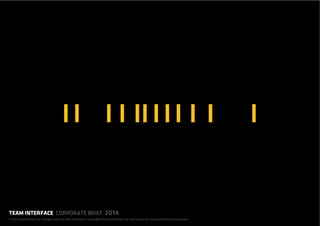

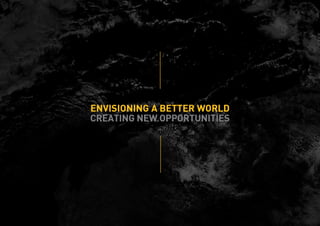
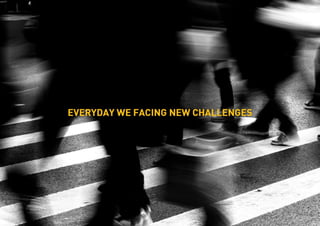
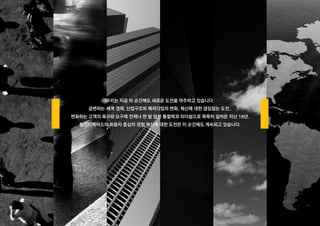
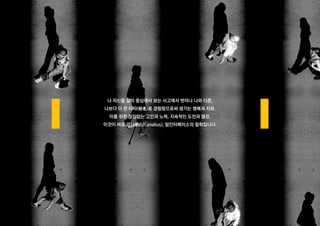

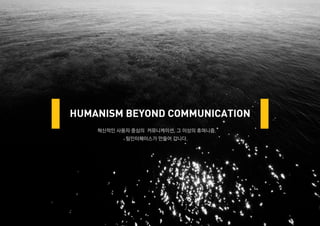

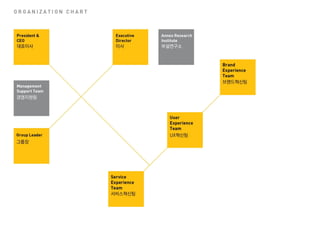


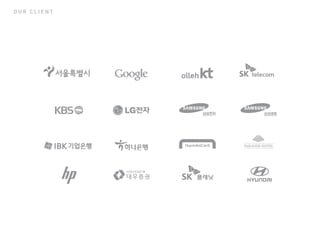

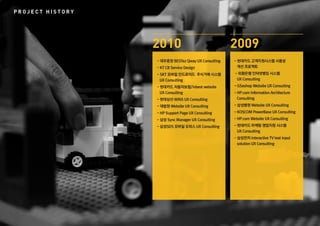
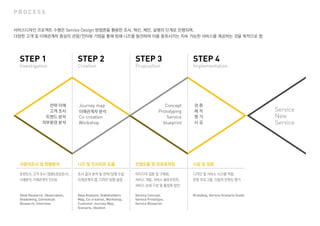

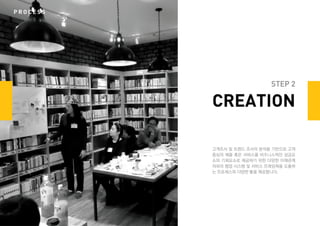

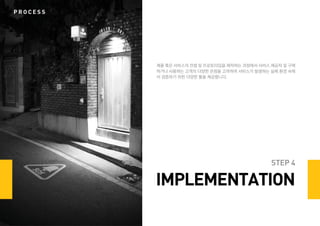

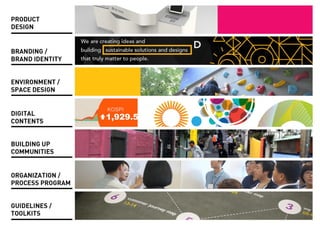
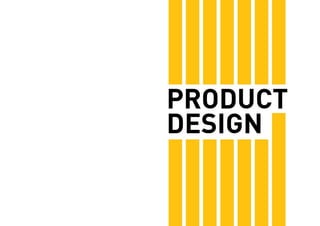

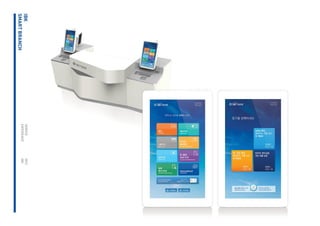

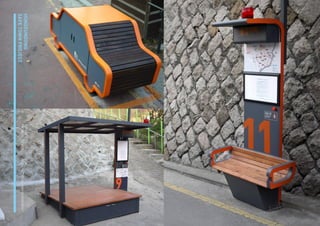

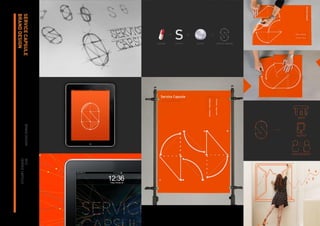
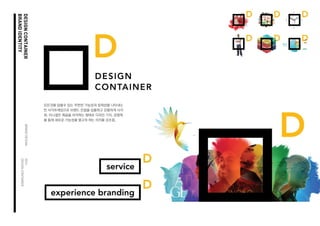
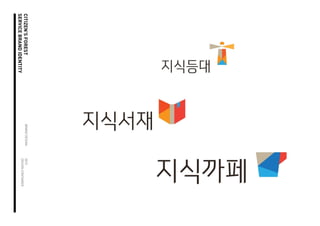

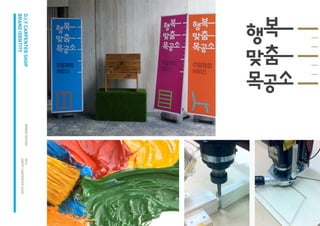
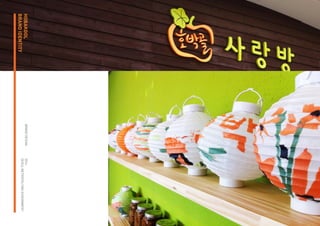

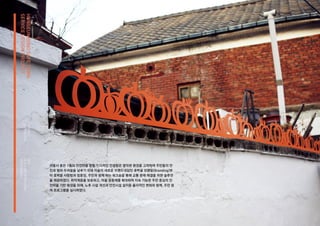
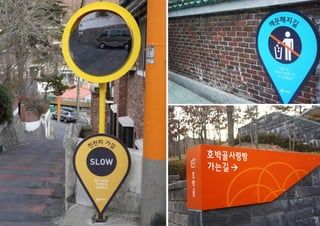
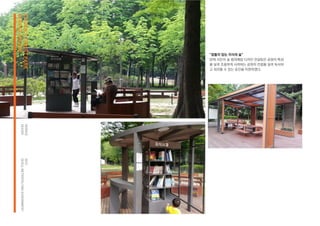
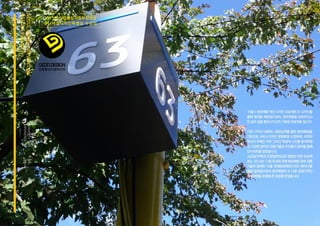

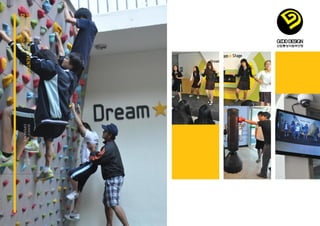


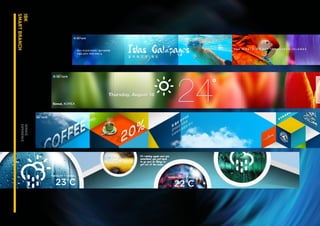
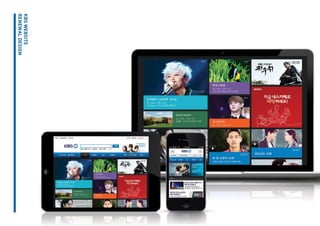
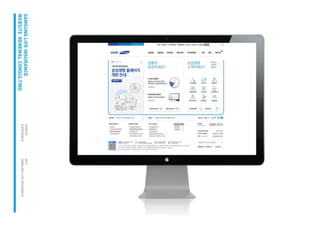
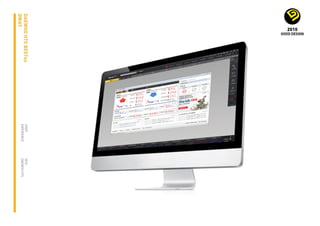
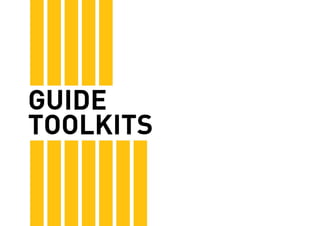
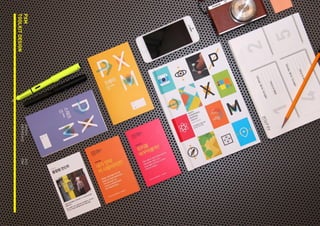


Ad
Recommended
Teaminterface company profile 2014(chn)
Teaminterface company profile 2014(chn)teaminterface
?
Team Interface is a service design company focused on user-centered experiences, having evolved since its inception in 1996. The company emphasizes collaboration and humanism in their approaches to creating innovative solutions for various clients, including significant projects in the public and private sectors. With a history of tackling challenges in an ever-changing global economy, Team Interface aims to enhance customer satisfaction through tailored service designs.Teaminterface company profile 2014(eng)
Teaminterface company profile 2014(eng)teaminterface
?
Team Interface is a South Korean service design consulting firm established in 1996. The document provides an overview of the company's history, organizational structure, services, global partnerships, clients, and project portfolio. Key services include service experience, user experience, brand experience, and a service design process that involves investigation, creation, proposition, and implementation stages. The company has partnered with design firms around the world and has worked with clients across various industries in South Korea.PXM (??????? ?? ??? ??)
PXM (??????? ?? ??? ??)teaminterface
?
PXM(Photo eXperience Mapping)? ????? ???? ???? ??? ?? ¡®??????¡¯? ?????? ???? ?? ?? ??? ?? ? ?? ¡®???? ????¡¯? ??????(Community Mapping) ???? ?? ???????.
PXM? ????? ???? ?? ??? ?? ???? ?? ????? ???? ??? ?? ????? ??? ? ??? ?? ??? ?? ???.
???? ???? ?? ??? ????? ??? ??? ???? ?? ¡®??????¡¯? ???, ????? ??? ?? ??? ??? ?? ¡®??? ????¡¯? ???? ???? ?? ???.
PXM ?? ???
www.PXM.co.kr?????? ?? ??? ?? ?????? ??
?????? ?? ??? ?? ?????? ??teaminterface
?
????? ????? ?? ??? ?? ? ?? ? ?????? ?? ??? ??? ? ? ?? ???? ?????? ???? ????? ??(Service design paradise hotel pusan case study)team interface 111014
(Service design paradise hotel pusan case study)team interface 111014teaminterface
?
The document describes a case study of a service design project conducted for the Paradise Hotel in Busan, South Korea. The project involved analyzing the business environment and customer base of the hotel, creating customer personas, mapping customer journeys, and developing a service blueprint to improve the online and offline customer experience. The goal was to strengthen the hotel's brand identity and customer relationships through an enhanced service design.Creative Traction Methodology - For Early Stage Startups
Creative Traction Methodology - For Early Stage StartupsTommaso Di Bartolo
?
The document discusses the Creative Traction Methodology (CTM) for gaining traction for new products and ideas. CTM has three parts: 1) The Idea Release Life Cycle which emphasizes validating ideas before development and engaging communities early. 2) Ransack Tools which means leveraging new growth hacking strategies and tools. 3) Act Creatively which involves lateral thinking with no biases to attract niche audiences and validate assumptions through experimentation. The document provides examples and case studies for applying each part of CTM.Mobile Is Eating the World (2016)
Mobile Is Eating the World (2016)a16z
?
In 'Mobile Ate the World', Benedict Evans discusses the transition from PCs to mobile technology, highlighting the rapid growth of smartphone adoption and its impact on computing. He notes that mobile devices now outnumber traditional computers and serve as essential tools that redefine user interactions, industries, and business workflows. The rising mobile ecosystem signifies a fundamental shift in technology access and consumption patterns, shaping the future landscape of digital interactions.Bethany Michels Master of Architecture Thesis 2025
Bethany Michels Master of Architecture Thesis 2025Bethany Michels
?
Master of Architecture Thesis at the University of Virginia - 2025AI-Driven-Personalization-in-UX-Designing-for-One-in-a-Million.pdf
AI-Driven-Personalization-in-UX-Designing-for-One-in-a-Million.pdfSultan Shalakhti
?
Why you should attend this event
Talk Title: AI-Driven Personalization in UX: Designing for One in a Million
In this session, Sultan Shalakhti explores how artificial intelligence is reshaping user experience through smart, adaptive personalization. From e-commerce to banking, personalized design has become a key differentiator¡ªwhen done right. Learn how to apply AI tools to enhance user journeys, balance personalization with privacy, and build experiences that feel uniquely human. This talk blends strategy, ethics, and real-world use cases for UX professionals ready to embrace the future.
?
????? ??????: ??????? ??????? ??????? ????????? ?? ????? ????????: ????? ???? ??? ??? ??? ???
??? ??????:
?????? ????? ????? ?? ??? ?????? ?? ???? ??? ??? ???? ?????? ????????? ????? ????? ???????? ?? ???? ??????? ????? ??????????. ?? ??????? ??????????? ??? ?????? ??????? ???? ??????? ?????? ?????? ?? ???? ???????¡ª???? ??? ??? ?????? ?????? ??????. ?????? ??? ????? ????? ????? ?????? ????????? ?????? ??????? ???????? ?????? ??????? ??? ??????? ?????????? ????? ????? ????? ???? ????? ????????. ???? ???? ???? ??? ????????????? ???????????? ??????? ?????? ???????? ????????? ?? ???? UX.
What you will learn in this session
Understand the Core Concepts of AI-Driven Personalization
Explore UX Design Strategies for Hyper-Personalization
Identify Key Tools and Technologies Behind Personalization
Evaluate the Ethical and Privacy Considerations
Apply Personalization Tactics to Real UX ChallengesMULTI SENSORY EXPERIENCE DESIGN RESEARCH
MULTI SENSORY EXPERIENCE DESIGN RESEARCHSamuel Thuo
?
Excited to share insights from my Dissertation Thesis on Multisensory Experience Design in Art Museums, focusing on Nairobi, Kenya! I have to say that this is the work that set me on my current trajectory and led me to my current design philosophy of design for all senses.
Have you been to a #museum, wanted to touch an exhibit and there you saw an injunction, "Please don't touch"....or "Please speak softly",,,,or "Please no eating in the museum".....or "Please don't use strong perfume".... these injunctions have made museums to be mono-sensory experience oriented, alienating the visitors. These injunctions speak volumes of our innate and inherent desire to want to engage holistically with all our #senses with objects. This is a major problem especially in Kenya's museums, which is a paradox with its rich cultural, and anthropological exhibits that require engagement with all the senses.
Inspired by David Howes' insights from Concordia University, my thesis challenges this status quo by exploring historical precedents. Did you know that in the 18th century, museums encouraged multisensory interaction? Today, there's a global shift towards enhancing museum experiences through multisensory #design, yet Kenya's museums often lag behind international standards.
This research isn't just about aesthetics....it's about fostering meaningful, educational, and socially enriching experiences. By embracing multisensory design, museums can bridge cultural divides and create environments where every visitor feels welcomed and engaged. And want to go back.
Let's spark a conversation about the future of museum experiences. How can we leverage design to make cultural institutions more accessible and inspiring for all? 3 bedroom bungalow with all bedroom ensuite
3 bedroom bungalow with all bedroom ensuitemodele dawodu
?
3 bedroom bungalow with all bedroom ensuite More Related Content
Viewers also liked (9)
?????? ?? ??? ?? ?????? ??
?????? ?? ??? ?? ?????? ??teaminterface
?
????? ????? ?? ??? ?? ? ?? ? ?????? ?? ??? ??? ? ? ?? ???? ?????? ???? ????? ??(Service design paradise hotel pusan case study)team interface 111014
(Service design paradise hotel pusan case study)team interface 111014teaminterface
?
The document describes a case study of a service design project conducted for the Paradise Hotel in Busan, South Korea. The project involved analyzing the business environment and customer base of the hotel, creating customer personas, mapping customer journeys, and developing a service blueprint to improve the online and offline customer experience. The goal was to strengthen the hotel's brand identity and customer relationships through an enhanced service design.Creative Traction Methodology - For Early Stage Startups
Creative Traction Methodology - For Early Stage StartupsTommaso Di Bartolo
?
The document discusses the Creative Traction Methodology (CTM) for gaining traction for new products and ideas. CTM has three parts: 1) The Idea Release Life Cycle which emphasizes validating ideas before development and engaging communities early. 2) Ransack Tools which means leveraging new growth hacking strategies and tools. 3) Act Creatively which involves lateral thinking with no biases to attract niche audiences and validate assumptions through experimentation. The document provides examples and case studies for applying each part of CTM.Mobile Is Eating the World (2016)
Mobile Is Eating the World (2016)a16z
?
In 'Mobile Ate the World', Benedict Evans discusses the transition from PCs to mobile technology, highlighting the rapid growth of smartphone adoption and its impact on computing. He notes that mobile devices now outnumber traditional computers and serve as essential tools that redefine user interactions, industries, and business workflows. The rising mobile ecosystem signifies a fundamental shift in technology access and consumption patterns, shaping the future landscape of digital interactions.Recently uploaded (20)
Bethany Michels Master of Architecture Thesis 2025
Bethany Michels Master of Architecture Thesis 2025Bethany Michels
?
Master of Architecture Thesis at the University of Virginia - 2025AI-Driven-Personalization-in-UX-Designing-for-One-in-a-Million.pdf
AI-Driven-Personalization-in-UX-Designing-for-One-in-a-Million.pdfSultan Shalakhti
?
Why you should attend this event
Talk Title: AI-Driven Personalization in UX: Designing for One in a Million
In this session, Sultan Shalakhti explores how artificial intelligence is reshaping user experience through smart, adaptive personalization. From e-commerce to banking, personalized design has become a key differentiator¡ªwhen done right. Learn how to apply AI tools to enhance user journeys, balance personalization with privacy, and build experiences that feel uniquely human. This talk blends strategy, ethics, and real-world use cases for UX professionals ready to embrace the future.
?
????? ??????: ??????? ??????? ??????? ????????? ?? ????? ????????: ????? ???? ??? ??? ??? ???
??? ??????:
?????? ????? ????? ?? ??? ?????? ?? ???? ??? ??? ???? ?????? ????????? ????? ????? ???????? ?? ???? ??????? ????? ??????????. ?? ??????? ??????????? ??? ?????? ??????? ???? ??????? ?????? ?????? ?? ???? ???????¡ª???? ??? ??? ?????? ?????? ??????. ?????? ??? ????? ????? ????? ?????? ????????? ?????? ??????? ???????? ?????? ??????? ??? ??????? ?????????? ????? ????? ????? ???? ????? ????????. ???? ???? ???? ??? ????????????? ???????????? ??????? ?????? ???????? ????????? ?? ???? UX.
What you will learn in this session
Understand the Core Concepts of AI-Driven Personalization
Explore UX Design Strategies for Hyper-Personalization
Identify Key Tools and Technologies Behind Personalization
Evaluate the Ethical and Privacy Considerations
Apply Personalization Tactics to Real UX ChallengesMULTI SENSORY EXPERIENCE DESIGN RESEARCH
MULTI SENSORY EXPERIENCE DESIGN RESEARCHSamuel Thuo
?
Excited to share insights from my Dissertation Thesis on Multisensory Experience Design in Art Museums, focusing on Nairobi, Kenya! I have to say that this is the work that set me on my current trajectory and led me to my current design philosophy of design for all senses.
Have you been to a #museum, wanted to touch an exhibit and there you saw an injunction, "Please don't touch"....or "Please speak softly",,,,or "Please no eating in the museum".....or "Please don't use strong perfume".... these injunctions have made museums to be mono-sensory experience oriented, alienating the visitors. These injunctions speak volumes of our innate and inherent desire to want to engage holistically with all our #senses with objects. This is a major problem especially in Kenya's museums, which is a paradox with its rich cultural, and anthropological exhibits that require engagement with all the senses.
Inspired by David Howes' insights from Concordia University, my thesis challenges this status quo by exploring historical precedents. Did you know that in the 18th century, museums encouraged multisensory interaction? Today, there's a global shift towards enhancing museum experiences through multisensory #design, yet Kenya's museums often lag behind international standards.
This research isn't just about aesthetics....it's about fostering meaningful, educational, and socially enriching experiences. By embracing multisensory design, museums can bridge cultural divides and create environments where every visitor feels welcomed and engaged. And want to go back.
Let's spark a conversation about the future of museum experiences. How can we leverage design to make cultural institutions more accessible and inspiring for all? 3 bedroom bungalow with all bedroom ensuite
3 bedroom bungalow with all bedroom ensuitemodele dawodu
?
3 bedroom bungalow with all bedroom ensuite ×îаæÃÀ¹úÍþ˹¿µÐÇ´óѧÆÕÀÌØά¶û·ÖУ±ÏÒµÖ¤£¨±«°Â±Ê±ÏÒµÖ¤Ê飩԰涨ÖÆ
×îаæÃÀ¹úÍþ˹¿µÐÇ´óѧÆÕÀÌØά¶û·ÖУ±ÏÒµÖ¤£¨±«°Â±Ê±ÏÒµÖ¤Ê飩԰涨ÖÆtaqyea
?
2025Ô°æÍþ˹¿µÐÇ´óѧÆÕÀÌØά¶û·ÖУ±ÏÒµÖ¤Êépdfµç×Ӱ桾qÞ±1954292140¡¿ÃÀ¹ú±ÏÒµÖ¤°ìÀíUWPÍþ˹¿µÐÇ´óѧÆÕÀÌØά¶û·ÖУ±ÏÒµÖ¤Êé¶àÉÙÇ®£¿¡¾qÞ±1954292140¡¿º£Íâ¸÷´óѧDiploma°æ±¾£¬ÒòΪÒßÇéѧУÍƳٷ¢·ÅÖ¤Êé¡¢Ö¤ÊéÔ¼þ¶ªÊ§²¹°ì¡¢Ã»ÓÐÕý³£±ÏҵδÄÜÈÏ֤ѧÀúÃæÁÙ¾ÍÒµÌṩ½â¾ö°ì·¨¡£µ±ÔâÓö¹Ò¿Æ¡¢¿õ¿Îµ¼ÖÂÎÞ·¨ÐÞÂúѧ·Ö£¬»òÕßÖ±½Ó±»Ñ§Ð£ÍËѧ£¬×îºóÎÞ·¨±ÏÒµÄò»µ½±ÏÒµÖ¤¡£´ËʱµÄÄãÒ»¶¨ÊÖ×ãÎ޴룬ÒòΪÁôѧһ³¡£¬Ã»ÓлñµÃ±ÏÒµÖ¤ÒÔ¼°Ñ§ÀúÖ¤Ã÷¿Ï¶¨ÊÇÎÞ·¨¸ø×Ô¼ººÍ¸¸Ä¸Ò»¸ö½»´úµÄ¡£
¡¾¸´¿ÌÍþ˹¿µÐÇ´óѧÆÕÀÌØά¶û·ÖУ³É¼¨µ¥ÐÅ·â,Buy University of Wisconsin-Platteville Transcripts¡¿
¹ºÂòÈÕº«³É¼¨µ¥¡¢Ó¢¹ú´óѧ³É¼¨µ¥¡¢ÃÀ¹ú´óѧ³É¼¨µ¥¡¢°ÄÖÞ´óѧ³É¼¨µ¥¡¢¼ÓÄôó´óѧ³É¼¨µ¥£¨q΢1954292140£©Ð¼ÓÆ´óѧ³É¼¨µ¥¡¢ÐÂÎ÷À¼´óѧ³É¼¨µ¥¡¢°®¶ûÀ¼³É¼¨µ¥¡¢Î÷°àÑÀ³É¼¨µ¥¡¢µÂ¹ú³É¼¨µ¥¡£³É¼¨µ¥µÄÒâÒåÖ÷ÒªÌåÏÖÔÚÖ¤Ã÷ѧϰÄÜÁ¦¡¢ÆÀ¹ÀѧÊõ±³¾°¡¢Õ¹Ê¾×ÛºÏËØÖÊ¡¢Ìá¸ß¼ȡÂÊ£¬ÒÔ¼°ÊÇ×÷ΪÁôÐÅÈÏÖ¤ÉêÇë²ÄÁϵÄÒ»²¿·Ö¡£
Íþ˹¿µÐÇ´óѧÆÕÀÌØά¶û·ÖУ³É¼¨µ¥Äܹ»ÌåÏÖÄúµÄµÄѧϰÄÜÁ¦£¬°üÀ¨Íþ˹¿µÐÇ´óѧÆÕÀÌØά¶û·ÖУ¿Î³Ì³É¼¨¡¢×¨ÒµÄÜÁ¦¡¢Ñо¿ÄÜÁ¦¡££¨q΢1954292140£©¾ßÌåÀ´Ëµ£¬³É¼¨±¨¸æµ¥Í¨³£°üº¬Ñ§ÉúµÄѧϰ¼¼ÄÜÓëÏ°¹ß¡¢¸÷¿Æ³É¼¨ÒÔ¼°ÀÏʦÆÀÓïµÈ²¿·Ö£¬Òò´Ë£¬³É¼¨µ¥²»½öÊÇѧÉúѧÊõÄÜÁ¦µÄÖ¤Ã÷£¬Ò²ÊÇÆÀ¹ÀѧÉúÊÇ·ñÊʺÏij¸ö½ÌÓýÏîÄ¿µÄÖØÒªÒÀ¾Ý£¡
ÎÒÃdzÐŵ²ÉÓõÄÊÇѧУ԰æÖ½ÕÅ£¨Ô°æÖ½ÖÊ¡¢µ×É«¡¢ÎÆ·£©ÎÒÃǹ¤³§ÓµÓÐÈ«Ì×½ø¿ÚÔ×°É豸£¬ÌØÊ⹤ÒÕ¶¼ÊDzÉÓò»Í¬»úÆ÷ÖÆ×÷£¬·ÂÕæ¶È»ù±¾¿ÉÒÔ´ïµ½100%£¬ËùÓгÉÆ·ÒÔ¼°¹¤ÒÕЧ¹û¶¼¿ÉÌáÇ°¸ø¿Í»§Õ¹Ê¾£¬²»ÂúÒâ¿ÉÒÔ¸ù¾Ý¿Í»§ÒªÇó½øÐе÷Õû£¬Ö±µ½ÂúÒâΪֹ£¡
¡¾Ö÷ÓªÏîÄ¿¡¿
Ò»¡¢¹¤×÷δȷ¶¨£¬»Ø¹úÐèÏȸø¸¸Ä¸¡¢Ç×ÆÝÅóÓÑ¿´ÏÂÎÄƾµÄÇé¿ö£¬°ìÀí±ÏÒµÖ¤|°ìÀíÎÄƾ: Âò´óѧ±ÏÒµÖ¤|Âò´óѧÎÄƾ¡¾qÞ±1954292140¡¿Íþ˹¿µÐÇ´óѧÆÕÀÌØά¶û·ÖУѧλ֤Ã÷ÊéÈçºÎ°ìÀíÉêÇ룿
¶þ¡¢»Ø¹ú½ø˽Æó¡¢ÍâÆó¡¢×Ô¼º×öÉúÒâµÄÇé¿ö£¬ÕâЩµ¥Î»ÊDz»²éѯ±ÏÒµÖ¤ÕæαµÄ£¬¶øÇÒ¹úÄÚûÓÐÇþµÀÈ¥²éѯ¹úÍâÎÄƾµÄÕæ¼Ù£¬Ò²²»ÐèÒªÌṩÕæʵ½ÌÓý²¿ÈÏÖ¤¡£¼øÓÚ´Ë£¬°ìÀíÃÀ¹ú³É¼¨µ¥Íþ˹¿µÐÇ´óѧÆÕÀÌØά¶û·ÖУ±ÏÒµÖ¤¡¾qÞ±1954292140¡¿¹úÍâ´óѧ±ÏÒµÖ¤, ÎÄƾ°ìÀí, ¹úÍâÎÄƾ°ìÀí, ÁôÐÅÍøÈÏÖ¤Exploring the Diverse Types of Textual Aids
Exploring the Diverse Types of Textual Aidsjenicahmendoza1
?
Exploring the Diverse Types of Textual AidsAd